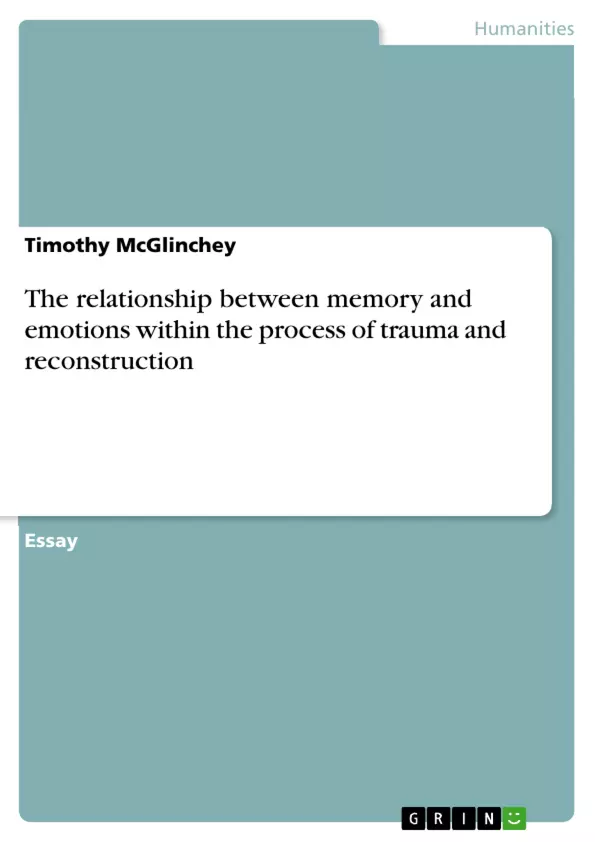The study of emotion is remarkably broad in its scope for anthropological concern, and the numerous influencing factors involved in it are invariably diverse. One factor that must not be underestimated is that of memory. It can be said that the two are interrelated through the influencing effect each has on the other, as will be expanded upon throughout this essay, as I dissect what I recognise as the most important elements of this memory-emotion connection.
First, is the notion of “collective memory”, and the influence of individual perception and identity within it. Also, I wish to examine the role of memory and emotion in the processes of trauma and reconstruction. In order to bring context to each of these areas, I will relate them to two main ethnographic case studies. The first is that of the maltreatment of Sudeten Germans and their displacement from Czechoslovakia, as researched by Svašek (2005). The second is a study by James (1997) who investigated fear in a transit camp for Sudanese asylum-seekers in South-West Ethiopia. Whilst focusing primarily on these, I will also make reference to Hinan’s study of collective memory and reconciliation in Guatemala and Rwanda (2010). Throughout this essay, with reference to these studies and other relevant research, I intend to clearly outline the significant relationship between memory and emotions.
Inhaltsverzeichnis (Table of Contents)
- What is the relationship between memory and emotions?
- Collective Memory, Identity, and Individual Perception
- Sudeten German Expellees
- Intergenerational Transmission of Trauma
- The Subjectivity of Truth
- Trauma and Reconstruction
- Sudanese Asylum-Seekers in South-West Ethiopia
Zielsetzung und Themenschwerpunkte (Objectives and Key Themes)
This essay explores the complex relationship between memory and emotions, examining how these two concepts influence and shape each other. The author uses two ethnographic case studies to illustrate these interactions: the displacement of Sudeten Germans from Czechoslovakia and the experiences of Sudanese asylum-seekers in South-West Ethiopia.
- Collective memory and its impact on individual identity
- The role of emotions in shaping and transmitting collective memory
- The concept of "chosen trauma" and its influence on intergenerational memory
- The interplay between memory, emotion, and truth
- The process of trauma and reconstruction in post-conflict societies
Zusammenfassung der Kapitel (Chapter Summaries)
The essay begins by introducing the concept of collective memory and its connection to individual identity and perception. It examines the case of Sudeten German expellees, highlighting the emotional significance of their memories of displacement and violence. The author explores how shared victimhood and "chosen trauma" contribute to the formation of collective memory, emphasizing the role of emotional association and individual perception in shaping these memories.
The essay then delves into the concept of "intergenerational transmission of trauma," examining how the emotional experiences of the Sudeten Germans were passed on to subsequent generations. This section explores the role of various mediums, such as photographs, testimonies, and shared belongings, in perpetuating these emotional legacies.
The essay concludes by transitioning into the topic of trauma and reconstruction, using the case study of Sudanese asylum-seekers in South-West Ethiopia to illustrate the complex interplay between memory, emotion, and the process of healing and rebuilding in post-conflict societies.
Schlüsselwörter (Keywords)
Collective memory, individual identity, emotion, trauma, reconstruction, displacement, intergenerational transmission, chosen trauma, shared victimhood, truth, post-conflict societies, ethnographic case studies, Sudeten German expellees, Sudanese asylum-seekers.
- Quote paper
- Timothy McGlinchey (Author), 2014, The relationship between memory and emotions within the process of trauma and reconstruction, Munich, GRIN Verlag, https://www.grin.com/document/322764



